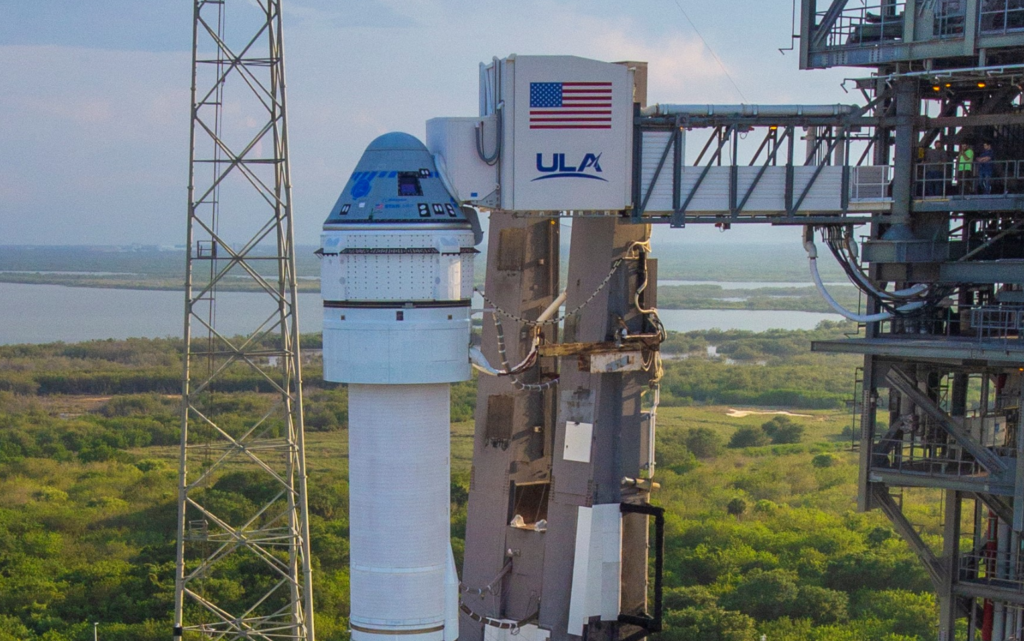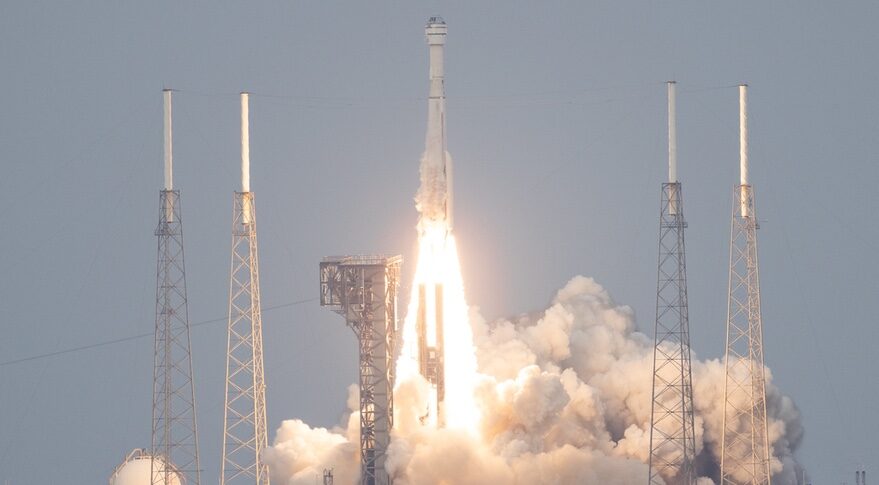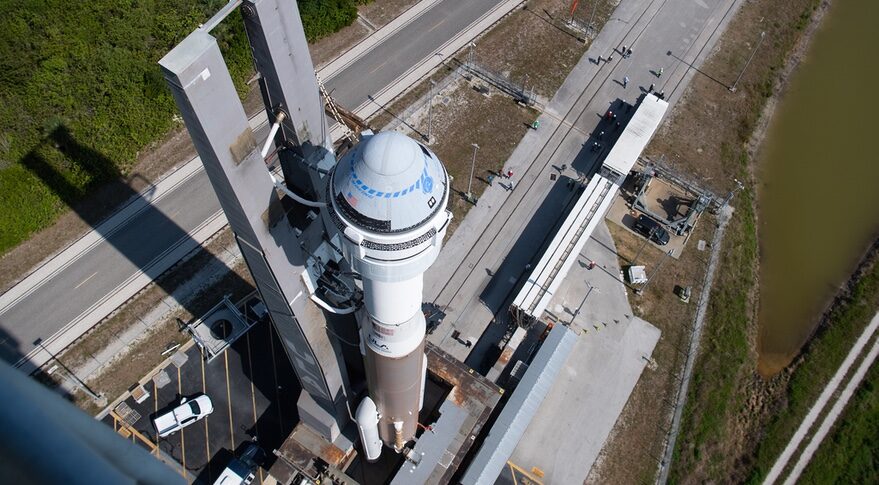
Boeing Just Launched Starliner For A Second Time
Many different companies and agencies within the space industry are working on new ways to reach orbit and increase our access to space. Boeing is no exception with the work on Starliner and the mission of reaching the International Space Station. After an unsuccessful attempt in late 2019, Boeing’s Starliner just launched again trying to redeem itself.
Specifically, yesterday around 7 pm ET, United Launch Alliance’s Atlas V took off with Boeing’s Starliner on top. From here the spacecraft separated from the upper stage and began its journey to the ISS. The first attempt was unsuccessful due to n 11-hour offset in the mission clock of Starliner that caused the spacecraft to compute that it was in an orbital insertion burn, when it was not.
This time around, Boeing made sure the clock was in working order, along with all other major components of the spacecraft. While it had been a long time since the last launch in 2019, Boeing did everything in its power this time around to ensure the mission was a success. Here I will go more in-depth into the recent launch, how it went, and what to expect in the future regarding Starliner.
Recent Launch

Just yesterday Boeing’s Starliner launched once again attempting to reach the International Space Station. As of right now, the spacecraft is headed to the station and expected to arrive later today. So far the mission has been a big success for everyone involved. Specifically, some of the updates began yesterday afternoon. United Launch Alliance tweeted saying, “LIFTOFF of the United Launch Alliance #AtlasV rocket with @Boeing’s CST-100 #Starliner spacecraft, preparing for the new era of commercial human spaceflight! GO ATLAS! GO STARLINER!” Here we saw the launch vehicle take off and propel the spacecraft into low Earth orbit. From here, Boeing provided more updates highlighting separation, orbital insertion, and more.
More specifically, the Boeing CST-100 Starliner and United Launch Alliance Atlas V rocket soared across the sky May 19th for the Orbital Flight Test-2, lifting off at 6:54 p.m. ET. The Atlas V RD-180 main engine and two solid rocket boosters ignited, generating more than a million and half pounds of thrust to lift the rocket away from the pad. The Atlas V immediately began pitching over to attain the proper flight path, while minimizing the dynamic pressure the vehicle experiences during flight. Ten seconds after liftoff, flight controllers confirmed the Starliner’s Mission Elapsed (MET) timer was operating as intended. Twelve seconds into the flight, the Atlas V rolled to a “heads up” position and used booster engine throttling to limit the vehicle’s acceleration to 3.5 g’s. This will provide crew safety and comfort during future flights with astronauts for NASA’s Commercial Crew Program. At about 45 seconds, the rocket carrying Starliner entered Max Q, or maximum aerodynamic pressure. This was the moment where the rocket experienced the highest mechanical stress. A little over a minute into the flight, the Atlas V reached Mach One or the speed of sound. One minute and 35 seconds after liftoff, the solid rocket boosters burned out, running out of fuel. About a minute later, the SRBs successfully jettisoned or separated from the rocket. The Starliner’s ascent cover jettisoned nearly five minutes after liftoff. The ascent cover protected critical hardware on top of the spacecraft and provided an aerodynamic shape for ascent through the atmosphere.
The Centaur upper stage then ignited, pushing Starliner to near orbital speeds. The Centaur generated 44,600 pounds of thrust to shape the desired trajectory for Starliner to reach the International Space Station. The single burn of the Centaur lasted about 7 minutes and 10 seconds. Out of the Earth’s atmosphere and no longer needing the additional aerodynamic support, the Starliner then jettisoned its aeroskirt. The aeroskirt extended the Starliner’s surface, enhancing its aerodynamic characteristics and stability. It also minimized the loads of this unique crewed configuration. Nearly 12 minutes into flight, the Centaur’s upper stage main engines cut off, also known as MECO. The mission has now entered a sub-orbital coast phase in preparation for spacecraft separation. Centaur’s sub-orbital trajectory design enhances crew safety by providing a shallow orbit more favorable for an abort if required, and ensures the Centaur will naturally de-orbit, impacting the ocean off the southwest coast of Australia. At about 14 minutes and 55 seconds, Centaur released the Starliner. Coming up next is the orbital insertion burn of the Starliner spacecraft.
Sixteen minutes after the Boeing CST-100 Starliner separated from the Atlas’ dual-engine Centaur, Starliner completed the orbital insertion burn and is now flying in its intended orbit. On its way toward the International Space Station, the Starliner’s unique vision-based navigation system used to autonomously dock with the orbiting platform as well as its new docking system cover will be thoroughly tested. The Starliner is targeted to dock to the station at around 7:10 p.m. ET, Friday, May 20. This completes the ascent profile of OFT-2. So far the mission has been a major success. This being said, some of the most difficult aspects are still yet to come.
Starliner & CCP

Now that we know exactly how the mission has gone so far and the progress Starliner has made, we can take a look at the spacecraft itself and what to expect on the rest of this mission. As mentioned prior, the spacecraft is currently on its way to the ISS. When it comes to docking, Boeing considers it one of the most difficult space flight challenges. These procedures start dozens of kilometers away, when Starliner’s cameras spot the space station as a bright point of light in front of a sea of stars. From here, an intricate orbital ballet begins as Starliner gets closer and closer to the station. Over the next few hours, Starliner will slowly move itself closer to the station and then pause before entering the 200-meter “keep out sphere” until station flight controllers clear it to enter. Starliner then begins the docking process, pausing once more 10 meters away form a Boeing-built International Docking Adapter and then continuing to final approach and docking.
Next, after the spacecraft has finished its mission, it needs to return to the surface of Earth safely. The CST-100 Starliner is designed to land at one of five landing sites in the continental U.S. After re-entering the atmosphere the Starliner will deploy pilot and drogue parachutes, prior to unfurling the spacecraft’s three main parachutes. Once the capsule is stable under its parachutes the spacecraft’s base heat shield will drop away, allowing the air bag system to inflate prior to a soft landing. Once Starliner is ready and cleared to leave the International Space Station, the undocking process begins and the spacecraft slowly backs away from the station. After a flyaround maneuver, Starliner positions itself for the deorbit burn. A short time later, when Starliner is in the right position over the Pacific Ocean, the service module conducts the deorbit burn, slowing down Starliner from orbital speeds, and then the service module detaches. The crew module begins its descent through the atmosphere, facing reentry heat of 3,000 degrees Fahrenheit (1,650 degrees Celsius). The parachute sequence begins around 30,000 feet (9 km) above the ground, when Starliner jettisons the forward heat shield that protects the parachutes during reentry. Two drogue parachutes begin slowing Starliner down, then detach. The three main parachutes are then deployed and inflated, and about 3,000 feet (0.9 km) off the ground, the airbags inflate. On touchdown, those airbags absorb the initial forces of landing, cushioning the crew for a soft, safe return to Earth.
The purpose of Starliner is to attempt to create a future in spaceflight. The spacecraft is developed in partnership with NASA and designed for researchers and adventurers alike. Boeing’s teams used lessons passed down from the Mercury, Gemini, Apollo, and shuttle programs, including the firsthand experience of the astronaut who commanded Space Shuttle Atlantis on the shuttle program’s final mission. In other words, Boeing’s Crew Space Transportation (CST)-100 Starliner spacecraft is being developed in collaboration with NASA’s Commercial Crew Program. The Starliner was designed to accommodate seven passengers, or a mix of crew and cargo, for missions to low-Earth orbit. For NASA service missions to the International Space Station, it will carry up to four NASA-sponsored crew members and time-critical scientific research. The Starliner has an innovative, weldless structure and is reusable up to 10 times with a six-month turnaround time. It also features wireless internet and tablet technology for crew interfaces.
Conclusion
In late 2019, Boeing attempted the first orbital flight test of Starliner and was unsuccessful. Now in the middle of 2022, the company has worked to make improvements and just launched the spacecraft for a second time. As of right now, everything has gone according to plan as it makes its way to the International Space Station. We will have to wait and see how it progresses and the impact it has on the space industry.
